Install the app
How to install the app on iOS
Follow along with the video below to see how to install our site as a web app on your home screen.
Note: This feature may not be available in some browsers.
Latest on MJJC
You are using an out of date browser. It may not display this or other websites correctly.
You should upgrade or use an alternative browser.
You should upgrade or use an alternative browser.
To Catlovers
- Thread starter MIST
- Start date
Ashtanga
Proud Member
Re: to catlovers
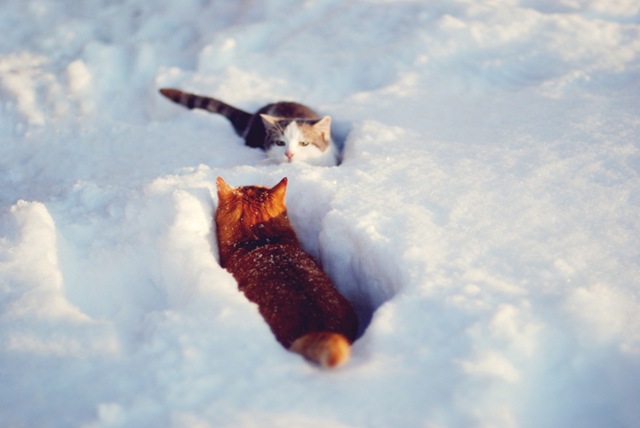



 :wub:
:wub:





thrillerchild
Proud Member
- Joined
- Jul 25, 2009
- Messages
- 3,787
- Points
- 63
Re: to catlovers
This thread is one of the best! :wub: Can't believe how much it calms me down :flowers:
This thread is one of the best! :wub: Can't believe how much it calms me down :flowers:
Ashtanga
Proud Member
Re: to catlovers
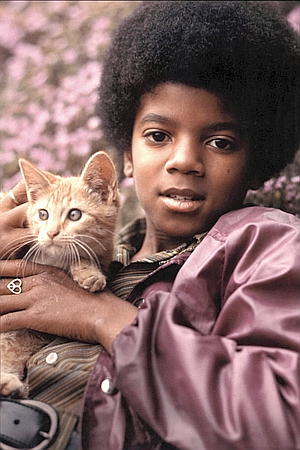 :heart:
:heart:
 :wub:
:wub:


Ashtanga
Proud Member
Re: to catlovers
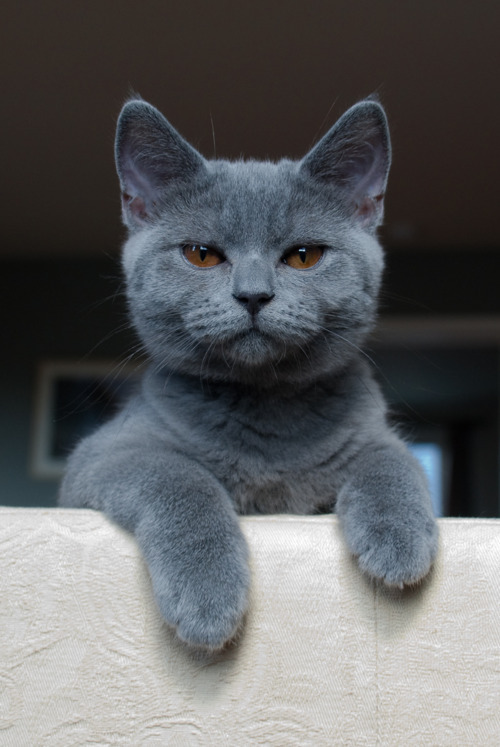 :wub:
:wub:

Ashtanga
Proud Member
Re: to catlovers




:wub:




:wub:
MIST
Proud Member
- Joined
- Jul 25, 2011
- Messages
- 5,411
- Points
- 83
Re: to catlovers
Cats helpline is a nonprofit network that helps homeless or unwanted cats.
They make a cry for help on facebook,people share it and someone opens a home
In the video there are some of the cats they have saved and who have new homes
I think they have chosen a really beautiful song for their video.
Cats helpline is a nonprofit network that helps homeless or unwanted cats.
They make a cry for help on facebook,people share it and someone opens a home
In the video there are some of the cats they have saved and who have new homes
I think they have chosen a really beautiful song for their video.
Ashtanga
Proud Member
Re: to catlovers
 :wub:
:wub:

MIST
Proud Member
- Joined
- Jul 25, 2011
- Messages
- 5,411
- Points
- 83
Re: to catlovers
Tel Aviv's stray cats no longer have to go hungry
New SOS campaign aims to distribute organized feeding bowls to end starvation, maintain city hygiene.
By Noah Kosharek
Get Haaretz on iPhone Get Haaretz on Android The S.O.S. Pet Association announced Sunday the launch of a campaign for the distribution of 2,700 feeding bowls throughout Tel Aviv, which will be placed on streets, in front of residential buildings, restaurants and cafes in efforts to establish an organized feeding system for the city's stray cats.
http://www.haaretz.com/news/tel-aviv-s-stray-cats-no-longer-have-to-go-hungry-1.3182
The campaign will begin on Monday, during which 350 bowls will be distributed from Rothchild Boulevard to restaurants and cafes, as well as pedestrians interested in participating.
The association said that they were aware of the fact that feeding stray cats often becomes a conflict between neighbors, which is why they have decided to try and impose a more organized and aesthetically pleasing feeding system for cats which might otherwise have starved to death because the trash bins have shut lids.
"The idea behind the campaign is to maintain hygiene at residential compounds, so the whole issue will stop being a nuisance," said Ricki Batzri, CEO of S.O.S. Pet Association.
She added that initially, the association's volunteers might be responsible for filling the bowls with food and water, with the hope that the city's residents will continue the tradition themselves.
Another campaign goal is to spay the cats in order to control their reproduction and diminish their numbers, and getting the cats to congregate makes this task a lot easier.
Anticipating the possible criticism that could be directed at the campaign, such as the fact that the presence of so many feeding bowls in the streets will only increase the amount of stray animals, Batzri said that "the cats are already there, whether they are hungry or well fed - they are there."
"If they receive more food, they will look much better, they won't be so pathetic and we will also be able to start talking to neighbors about reducing their presence by having them spayed," she added.
The campaign was first launched in Herzliya, where the group distributed over 200 feeding bowls to cafes and restaurants that were interested in participating, as well as to people at residential buildings that fed street cats on a regular basis.
Ramat Gan resident Ofer Gur, who has been feeding stray cats for two years, said that feeding the cats helps diminish their numbers.
"Every time I bring them food around 10 to 15 cats that I recognize come running," he said.
"I can also recognize which of them are spayed and when I spot one that isn't I call S.O.S. to come and pick it up," he added.
He continued to explain that because he feeds them regularly and in an organized manner, his neighbors don't mind their presence.
Tel Aviv's stray cats no longer have to go hungry
New SOS campaign aims to distribute organized feeding bowls to end starvation, maintain city hygiene.
By Noah Kosharek
Get Haaretz on iPhone Get Haaretz on Android The S.O.S. Pet Association announced Sunday the launch of a campaign for the distribution of 2,700 feeding bowls throughout Tel Aviv, which will be placed on streets, in front of residential buildings, restaurants and cafes in efforts to establish an organized feeding system for the city's stray cats.
http://www.haaretz.com/news/tel-aviv-s-stray-cats-no-longer-have-to-go-hungry-1.3182
The campaign will begin on Monday, during which 350 bowls will be distributed from Rothchild Boulevard to restaurants and cafes, as well as pedestrians interested in participating.
The association said that they were aware of the fact that feeding stray cats often becomes a conflict between neighbors, which is why they have decided to try and impose a more organized and aesthetically pleasing feeding system for cats which might otherwise have starved to death because the trash bins have shut lids.
"The idea behind the campaign is to maintain hygiene at residential compounds, so the whole issue will stop being a nuisance," said Ricki Batzri, CEO of S.O.S. Pet Association.
She added that initially, the association's volunteers might be responsible for filling the bowls with food and water, with the hope that the city's residents will continue the tradition themselves.
Another campaign goal is to spay the cats in order to control their reproduction and diminish their numbers, and getting the cats to congregate makes this task a lot easier.
Anticipating the possible criticism that could be directed at the campaign, such as the fact that the presence of so many feeding bowls in the streets will only increase the amount of stray animals, Batzri said that "the cats are already there, whether they are hungry or well fed - they are there."
"If they receive more food, they will look much better, they won't be so pathetic and we will also be able to start talking to neighbors about reducing their presence by having them spayed," she added.
The campaign was first launched in Herzliya, where the group distributed over 200 feeding bowls to cafes and restaurants that were interested in participating, as well as to people at residential buildings that fed street cats on a regular basis.
Ramat Gan resident Ofer Gur, who has been feeding stray cats for two years, said that feeding the cats helps diminish their numbers.
"Every time I bring them food around 10 to 15 cats that I recognize come running," he said.
"I can also recognize which of them are spayed and when I spot one that isn't I call S.O.S. to come and pick it up," he added.
He continued to explain that because he feeds them regularly and in an organized manner, his neighbors don't mind their presence.
Ashtanga
Proud Member
Re: to catlovers




:wub:




:wub:
MIST
Proud Member
- Joined
- Jul 25, 2011
- Messages
- 5,411
- Points
- 83
<iframe width="420" height="315" src="http://www.youtube.com/embed/P6qJCpSznVc" frameborder="0" allowfullscreen></iframe>
“In a world filled with hate, we must still dare to hope.
In a world filled with anger, we must still dare to comfort.
In a world filled with despair, we must still dare to dream.
And in a world filled with distrust, we must still dare to believe.”MJ
“In a world filled with hate, we must still dare to hope.
In a world filled with anger, we must still dare to comfort.
In a world filled with despair, we must still dare to dream.
And in a world filled with distrust, we must still dare to believe.”MJ
Ashtanga
Proud Member
Re: to catlovers





:wub:





:wub:
Last edited:
thrillerchild
Proud Member
- Joined
- Jul 25, 2009
- Messages
- 3,787
- Points
- 63
Ashtanga
Proud Member
Re: to catlovers
[youtube]5xl4L-6OF_A[/youtube]
http://www.youtube.com/watch?feature=player_embedded&v=5xl4L-6OF_A
:wub:
[youtube]5xl4L-6OF_A[/youtube]
http://www.youtube.com/watch?feature=player_embedded&v=5xl4L-6OF_A
:wub:
Ashtanga
Proud Member
Re: to catlovers


:wub:


:wub:
MIST
Proud Member
- Joined
- Jul 25, 2011
- Messages
- 5,411
- Points
- 83
Alliance for Animals sent out an alert that Big Cat Rescue Entertainment Group is once again on tour traveling to malls with their exhibit of very young exotic animals; some as young as two-weeks-old. They ask for public support to stop the events if they come to your town.
Alliance for Animals calls Big Cat Rescue Entertainment, “One of the most notorious breeders of baby lions and tigers. This business makes a profit by breeding tiger cubs, taking them from their mothers shortly after birth, and abusing them by carting them around from mall to mall charging people to pet them and be photographed with the young cubs.”
Big Cat Rescue Entertainment, which is run by Joe Schreibvogel has been involved in incidents where “employees blatantly violate the laws and endanger the cubs and the public.” In one video a child is bitten by a cub and another video shows a sick cub on display for people to pet.
Big Cat Rescue Entertainment touts its exhibits are a way to educate the public about the dangers of keeping exotic animals.
The non-profit group is involved in several lawsuits and the organization has nearly a dozen aliases. They are currently being sued in federal court by an accredited sanctuary called Big Cat Rescue in Tampa, Florida for use of their name.
If the Big Cat exhibit lands in your town, Alliance for Animals suggests that you immediately contact the mall manager to let them know you do not want the exhibit in your area.
Read more: http://www.care2.com/causes/stop-tr...loiting-baby-animals-video.html#ixzz1s6vxW2Ob
<object width="420" height="338" id="kickWidget_23072_28088" name="kickWidget_23072_28088" type="application/x-shockwave-flash" data="http://reporter.911animalabuse.com/service/getWidgetSwf.kickAction">
<!-- Firefox uses the 'data' attribute above, IE/Safari uses the param below -->
<param name="movie" value="http://reporter.911animalabuse.com/service/getWidgetSwf.kickAction"></param>
<param name="FlashVars" value="affiliateSiteId=23072&widgetId=28088&width=420&height=338&mediaType_mediaID=video_1460404&autoPlay=0" ></param>
<param name="wmode" value="window" ></param><param name="allowFullScreen" value="true" ></param>
<param name="allowScriptAccess" value="always" ></param>
</object>
Alliance for Animals calls Big Cat Rescue Entertainment, “One of the most notorious breeders of baby lions and tigers. This business makes a profit by breeding tiger cubs, taking them from their mothers shortly after birth, and abusing them by carting them around from mall to mall charging people to pet them and be photographed with the young cubs.”
Big Cat Rescue Entertainment, which is run by Joe Schreibvogel has been involved in incidents where “employees blatantly violate the laws and endanger the cubs and the public.” In one video a child is bitten by a cub and another video shows a sick cub on display for people to pet.
Big Cat Rescue Entertainment touts its exhibits are a way to educate the public about the dangers of keeping exotic animals.
The non-profit group is involved in several lawsuits and the organization has nearly a dozen aliases. They are currently being sued in federal court by an accredited sanctuary called Big Cat Rescue in Tampa, Florida for use of their name.
If the Big Cat exhibit lands in your town, Alliance for Animals suggests that you immediately contact the mall manager to let them know you do not want the exhibit in your area.
Read more: http://www.care2.com/causes/stop-tr...loiting-baby-animals-video.html#ixzz1s6vxW2Ob
<object width="420" height="338" id="kickWidget_23072_28088" name="kickWidget_23072_28088" type="application/x-shockwave-flash" data="http://reporter.911animalabuse.com/service/getWidgetSwf.kickAction">
<!-- Firefox uses the 'data' attribute above, IE/Safari uses the param below -->
<param name="movie" value="http://reporter.911animalabuse.com/service/getWidgetSwf.kickAction"></param>
<param name="FlashVars" value="affiliateSiteId=23072&widgetId=28088&width=420&height=338&mediaType_mediaID=video_1460404&autoPlay=0" ></param>
<param name="wmode" value="window" ></param><param name="allowFullScreen" value="true" ></param>
<param name="allowScriptAccess" value="always" ></param>
</object>
MIST
Proud Member
- Joined
- Jul 25, 2011
- Messages
- 5,411
- Points
- 83
"L ast summer, Dane County Humane Officers found a three year old baboon living in a Madison man’s basement laundry room.
While investigating a sexual assault last year, Milwaukee police found crocodiles living in the bedroom and den of a reptile collector’s home.
These days,anyone with access to the internet and more cash than brains can buy himself a “pet” lion, tiger,python or, yes, a baboon, and according to Wisconsin state Veterinarian Yvonne Bellay, the amount of money and violence involved in the international trade of these so called “exotics”is outranked only by that associated with drug running and arms dealing.
So, it may surprise you to learn that there are no Wisconsin laws that prohibit the private ownership of a lion, tiger, python or baboon or any one of thousands of other species of non-native wild animals that may end up living in your neighbor’s basement or backyard.
Although the DNR or police may confiscate a family’s beloved “pet” raccoon and local law enforcement may take your pit bull,the state has no authority to confiscate a “pet” tiger unless the animal is being cruelly treated under Wisconsin’s “Crimes Against Animals” law. Dr. Bellay,who works for the Wisconsin Department of Agriculture and who works for the Wisconsin Department of Agriculture and
Consumer Protection, relates that she cannot count the number of telephone calls she receives every year from people who follow the sound of a roar to a lion living in a pen just feet from their yard and who are then shocked to find out there is nothing they can do but hope a chain-link fence keeps the predator at bay.
Cities and villages have the authority in Wisconsin to enact local ordinances to prohibit “inherently dangerous” animals from living within their boundaries, but if you live in many of the“unincorporated”areas of the State,watch out because it may be a jungle out there.
The United States Department of Agriculture’s Role.The USDA plays a limited role in regulating the private ownership of some exotic animals but only if the owner plans to exhibit or in some other manner commercially exploit the animal. If that is the case, there are a few
minimal housing and other animal care regulations that are on the books but even these laws are barely enforced.
It should come as no surprise that the cute little tiger cub that could be kept in a play pen in the living room will quickly grow into
a 300 pound predator with an appetite that would strain the food budget of most families.
Once these animals reach a few months of age, the “owner” will realize they are incompetent to care for the animal and soon also find that the local zoo, animal shelter or “sanctuary” has no room for the castoff either. Many of these poor beings end up shut into dark airless garages or filthy basement rooms and in pens that are so small the animals cannot stand-up or turn around. These wild animals,
who are meant to run, climb or roam for miles, will have no enrichment or even the companionship of others of their species. They will display the selfharming and repetitive pacing and other stereotypical behaviors of the typical dog who has gone “kennel crazy.”
Monkeys, dressed up like human children, will often have their teeth removed to make them less dangerous to their owners. Lions and tigers are continuously bred to provide a constant supply of baby animals to attract tourists to roadside attractions or photo opportunities. Older animals will be shipped to butchers who sell the animals parts for hundredsand thousands of dollars.
T he private ownership of exotic animals should be closely regulated. Owners must be required to provide adequate shelter and veterinary care for all of their animals.
To eliminate the breeding of exotic animals within our state,owners should be required to either neuter their adult animals or provide secure segregated housing to control breeding opportunities.
In order to protect the public, Wisconsin should require the owners of inherently dangerous exotic animals to maintain liability insurance of at least $250,000.00 per animal. Only those persons who are financially able to provide adequate shelter, food, water, veterinary care and enrichment should be allowed to own these wild animals. Wisconsin needs to join the majority of states that have already taken steps to contrlharmful and dangerous trafficking of these beautiful creatures. *
http://www.allanimals.org/files/newsletter_AutumnWinter2011.pdf
Maybe you have read about this
Breaking News: Exotic Animals Run Loose in Ohio
http://www.care2.com/causes/breaking-news-exotic-animals-run-loose-in-ohio.html
While investigating a sexual assault last year, Milwaukee police found crocodiles living in the bedroom and den of a reptile collector’s home.
These days,anyone with access to the internet and more cash than brains can buy himself a “pet” lion, tiger,python or, yes, a baboon, and according to Wisconsin state Veterinarian Yvonne Bellay, the amount of money and violence involved in the international trade of these so called “exotics”is outranked only by that associated with drug running and arms dealing.
So, it may surprise you to learn that there are no Wisconsin laws that prohibit the private ownership of a lion, tiger, python or baboon or any one of thousands of other species of non-native wild animals that may end up living in your neighbor’s basement or backyard.
Although the DNR or police may confiscate a family’s beloved “pet” raccoon and local law enforcement may take your pit bull,the state has no authority to confiscate a “pet” tiger unless the animal is being cruelly treated under Wisconsin’s “Crimes Against Animals” law. Dr. Bellay,who works for the Wisconsin Department of Agriculture and who works for the Wisconsin Department of Agriculture and
Consumer Protection, relates that she cannot count the number of telephone calls she receives every year from people who follow the sound of a roar to a lion living in a pen just feet from their yard and who are then shocked to find out there is nothing they can do but hope a chain-link fence keeps the predator at bay.
Cities and villages have the authority in Wisconsin to enact local ordinances to prohibit “inherently dangerous” animals from living within their boundaries, but if you live in many of the“unincorporated”areas of the State,watch out because it may be a jungle out there.
The United States Department of Agriculture’s Role.The USDA plays a limited role in regulating the private ownership of some exotic animals but only if the owner plans to exhibit or in some other manner commercially exploit the animal. If that is the case, there are a few
minimal housing and other animal care regulations that are on the books but even these laws are barely enforced.
It should come as no surprise that the cute little tiger cub that could be kept in a play pen in the living room will quickly grow into
a 300 pound predator with an appetite that would strain the food budget of most families.
Once these animals reach a few months of age, the “owner” will realize they are incompetent to care for the animal and soon also find that the local zoo, animal shelter or “sanctuary” has no room for the castoff either. Many of these poor beings end up shut into dark airless garages or filthy basement rooms and in pens that are so small the animals cannot stand-up or turn around. These wild animals,
who are meant to run, climb or roam for miles, will have no enrichment or even the companionship of others of their species. They will display the selfharming and repetitive pacing and other stereotypical behaviors of the typical dog who has gone “kennel crazy.”
Monkeys, dressed up like human children, will often have their teeth removed to make them less dangerous to their owners. Lions and tigers are continuously bred to provide a constant supply of baby animals to attract tourists to roadside attractions or photo opportunities. Older animals will be shipped to butchers who sell the animals parts for hundredsand thousands of dollars.
T he private ownership of exotic animals should be closely regulated. Owners must be required to provide adequate shelter and veterinary care for all of their animals.
To eliminate the breeding of exotic animals within our state,owners should be required to either neuter their adult animals or provide secure segregated housing to control breeding opportunities.
In order to protect the public, Wisconsin should require the owners of inherently dangerous exotic animals to maintain liability insurance of at least $250,000.00 per animal. Only those persons who are financially able to provide adequate shelter, food, water, veterinary care and enrichment should be allowed to own these wild animals. Wisconsin needs to join the majority of states that have already taken steps to contrlharmful and dangerous trafficking of these beautiful creatures. *
http://www.allanimals.org/files/newsletter_AutumnWinter2011.pdf
Maybe you have read about this
Breaking News: Exotic Animals Run Loose in Ohio
http://www.care2.com/causes/breaking-news-exotic-animals-run-loose-in-ohio.html
Ashtanga
Proud Member
Re: to catlovers
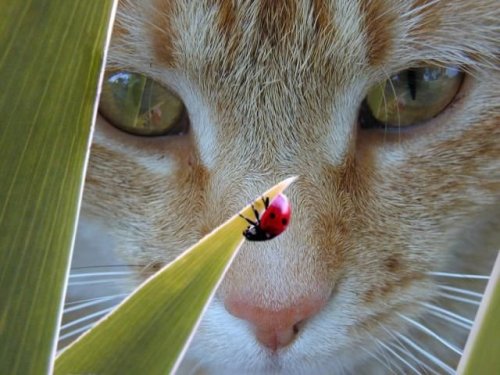



:wub:




:wub:
Ashtanga
Proud Member
Re: to catlovers




:wub:
CATTITUDE quote of the day: "Never trust a smiling cat."



:wub:
thrillerchild
Proud Member
- Joined
- Jul 25, 2009
- Messages
- 3,787
- Points
- 63
I love that cat & lady bug picture!! 
-----------------------------
It might look like an ordinary household kitten – but this cute puss could hold the key to the survival of its species.
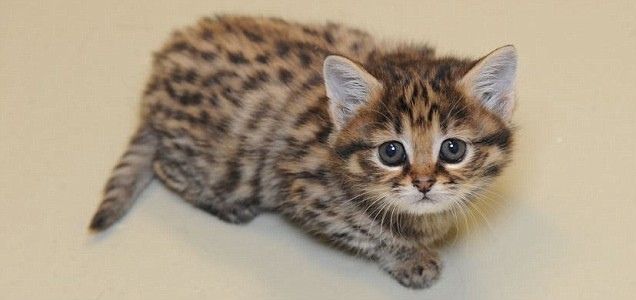
This is an endangered African black-footed cat – but its mother was an* ordinary domestic cat who was used as a surrogate.
In a world first, nine-year-old frozen sperm from wild cats was used to* create embryos that were transplanted by IVF into the domestic moggy.
The result is Crystal, who was born in February.
Ron Forman, president of the Audubon Centre for Research of* Endangered Species in New Orleans, where the experiment was carried out, said it ‘renews our hope for the future’.
He added: ‘We are proving this science works. We can provide hi-tech options for many different species as the situation grows more and more critical for wildlife across the globe.’
The sperm used to make Crystal was taken in 2003 and frozen before being used to produce 11 embryos two years later. Five were thawed and transferred to domestic cat Amelie in December last year and the kitten was born 67 days later.
The species is the smallest of the continent’s cats as well as one of the rarest and there are* fewer than 10,000 left because of habitat loss in their native southern Africa.
Dr Earle Pope, of the Audubon Nature Institute, said the species now had a ‘shot at survival’.
-----------------------------
It might look like an ordinary household kitten – but this cute puss could hold the key to the survival of its species.

This is an endangered African black-footed cat – but its mother was an* ordinary domestic cat who was used as a surrogate.
In a world first, nine-year-old frozen sperm from wild cats was used to* create embryos that were transplanted by IVF into the domestic moggy.
The result is Crystal, who was born in February.
Ron Forman, president of the Audubon Centre for Research of* Endangered Species in New Orleans, where the experiment was carried out, said it ‘renews our hope for the future’.
He added: ‘We are proving this science works. We can provide hi-tech options for many different species as the situation grows more and more critical for wildlife across the globe.’
The sperm used to make Crystal was taken in 2003 and frozen before being used to produce 11 embryos two years later. Five were thawed and transferred to domestic cat Amelie in December last year and the kitten was born 67 days later.
The species is the smallest of the continent’s cats as well as one of the rarest and there are* fewer than 10,000 left because of habitat loss in their native southern Africa.
Dr Earle Pope, of the Audubon Nature Institute, said the species now had a ‘shot at survival’.
MIST
Proud Member
- Joined
- Jul 25, 2011
- Messages
- 5,411
- Points
- 83
thrillerchild;3625613 said:I love that cat & lady bug picture!!
-----------------------------
It might look like an ordinary household kitten – but this cute puss could hold the key to the survival of its species.

This is an endangered African black-footed cat – but its mother was an* ordinary domestic cat who was used as a surrogate.
In a world first, nine-year-old frozen sperm from wild cats was used to* create embryos that were transplanted by IVF into the domestic moggy.
The result is Crystal, who was born in February.
Ron Forman, president of the Audubon Centre for Research of* Endangered Species in New Orleans, where the experiment was carried out, said it ‘renews our hope for the future’.
He added: ‘We are proving this science works. We can provide hi-tech options for many different species as the situation grows more and more critical for wildlife across the globe.’
The sperm used to make Crystal was taken in 2003 and frozen before being used to produce 11 embryos two years later. Five were thawed and transferred to domestic cat Amelie in December last year and the kitten was born 67 days later.
The species is the smallest of the continent’s cats as well as one of the rarest and there are* fewer than 10,000 left because of habitat loss in their native southern Africa.
Dr Earle Pope, of the Audubon Nature Institute, said the species now had a ‘shot at survival’.
I hope they will be successful to save the African black-footed cat but if they want to breed the cats and then place them in the wild again, where will they put them?
I guess there will be habitat loss in most places sooner or later because of humans......
Ashtanga
Proud Member
Re: to catlovers




:wub:




:wub:
MIST
Proud Member
- Joined
- Jul 25, 2011
- Messages
- 5,411
- Points
- 83
Re: to catlovers
I love little black "panthers"
http://youtu.be/I9E2pJUlAMo
A cat makes all the difference between coming home to an empty house and coming home. Unknown
Life is hard. Soften yours with a cat. Unknown
V
I love little black "panthers"
http://youtu.be/I9E2pJUlAMo
A cat makes all the difference between coming home to an empty house and coming home. Unknown
Life is hard. Soften yours with a cat. Unknown
V



